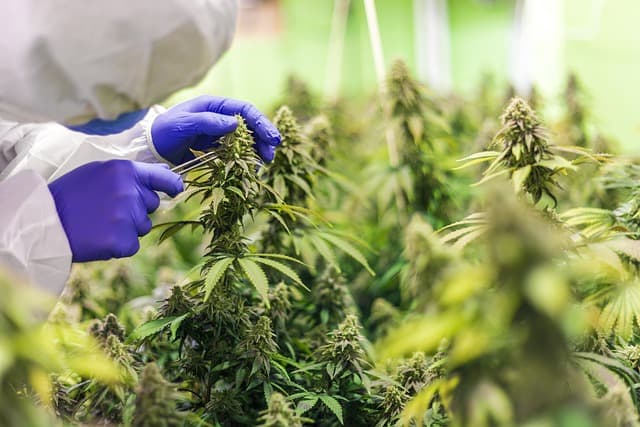Is it true that regular marijuana use worsens memory and how cannabinoids fight cancer cells? These questions were answered by a neuroscientist and graduate student at the University of Helsinki.
There are so many cannabinoid receptors in our body
Paradoxically, cannabinoid receptors are the most numerous in the central nervous system. What are they and why are they called that? When a receptor is studied in science, one of the key ways to describe it is to label what molecule is used to cause its activation. For example, there are nicotinic receptors. This doesn’t mean they are specifically designed to perceive nicotine. But because they were first described as receptors that are activated by this substance, they became known as nicotinic receptors. The same is true of cannabinoid receptors. They are present in our brain, lungs, gastrointestinal tract, muscles and respond to cannabinoids.
The human brain produces endocannabinoids on its own
There are endocannabinoids in the human body. These substances are produced naturally by the brain and are used as neurotransmitters. Endocannabinoids are structurally similar to phytocannabinoids (which are present in marijuana), have similar effects, and activate the same receptors. They are implicated in suppressing pain sensations, producing feelings of euphoria, and are also involved in appetite regulation, affecting memory and learning.
When marijuana is smoked regularly, the number of cannabioid receptors in the brain decreases
With regular marijuana use, the number of cannabinoid receptors in the brain decreases, scientists found out in a study. It involved people who regularly smoked marijuana. And as a control group were involved those who did not use it. And when measuring the number of receptors in the cortex of the large hemispheres in the first group they were more than in the second. The thing is that when the body gets too much cannabinoids, it realizes that something is wrong. There is too much load on the receptors, they are too active, and this causes unnatural physiological processes in the body. And in order to reduce this effect, to protect itself from excessive activation of these receptors, the body itself reduces their activity. Therefore, when a person smokes a lot and regularly, the number of these receptors decreases. With this is associated with the emergence of tolerance in smokers.
Smoking marijuana clearly has an effect on memory, but scientists have not yet realized how bad it is
Evidence on the long-term effects of cannabis use on memory varies. Occasional use is not thought to cause long-term memory impairment. With regular use, some sources report that normal memory functioning returns after 48 hours to 1 month of cessation, while others report that normal memory functioning does not return even after 1 year of smoking cessation. Why might this be happening in the first place? Scientists believe that memory impairment is due to suppression of mitochondria, the energy centers of cells, which also have cannabinoid receptors on their membrane.
Regular use of cannabinoids may reduce dopamine production
Dopamine is a pleasure hormone that also has one of the most important functions – motivational. That is, when you are motivated to do something, it means that your brain cells have secreted this neurotransmitter. According to a study published in the journal Molecular Psychiatry, with regular use of cannabis, the human brain begins to secrete less of it. Accordingly, when the amount of dopamine decreases, a number of physiological and psychological disorders can occur.
Marijuana may help treat Alzheimer’s disease
THC (tetrahydrocannabinol, one of the main cannabinoids) may be a potential cure for Alzheimer’s disease. It develops in people of advanced age. The main marker of the disease is a decrease in the amount of gray matter in the brain, and there is a die-off of a large number of neurons.
If you look at the brain of a patient with this disease, you can see clusters of protein. This protein changes its shape and rolls up into balls. The clumps join together to form plaques. This causes the neurons to “suffocate.” It’s called neurofibrillary tangles and amyloid plaques.
So THC is able to attach to amyloid proteins and prevent plaques from forming. It prevents the protein from taking on an irregular shape. The mechanism has been studied in animals and the study has been published on the website of the U.S. National Center for Biotechnology Information.
Cannabinoids can inhibit the development of cancer cells
Cannabinoids were originally used to relieve the side effects of chemotherapy in cancer patients. A person undergoing chemotherapy has a large number of physiological disturbances. For example, he or she feels nauseous all the time. Cannabinoids used to relieve the person’s condition and have an analgesic effect. But eventually scientists found out that cannabinoids can cause tumor shrinkage and destruction of cancer cells without causing destruction of healthy cells.


